Wildflowers, Grasses and Other Nonwoody Plants
Media
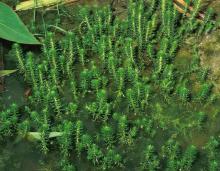
Species Types
Scientific Name
Myriophyllum spp.
Description
Water milfoils are feathery aquatic plants that grow rooted in shallow water. Their tips emerge above the waterline and bear bladelike, toothed leaves.
Media

Species Types
Scientific Name
Najas spp.
Description
Naiads are slender, narrow-leaved plants that grow completely under water and are rooted to the bottom. They never have broad, floating leaves or conspicuous flowers or seed heads.
Media
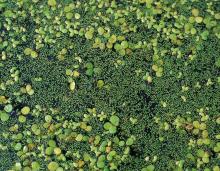
Species Types
Scientific Name
Lemna spp.; Spirodella spp.; Wolffia spp.
Description
Duckweeds are the smallest of the flowering plants. They consist of tiny, green, round, leaflike bodies that float on the water’s surface. They are an important food for waterfowl.
Media

Species Types
Scientific Name
Sagittaria spp.
Description
Arrowheads are aquatic plants with erect, usually arrow-shaped leaves and distinctive three-petaled flowers. They are often called duck potatoes because ducks, geese, and swans relish the tuberlike rootstocks.
Media

Species Types
Scientific Name
Phytolacca americana
Description
A tall, smooth, branching plant with red stems and juicy, dark purple berries, pokeweed is both toxic and a traditional edible potherb called poke salat. It is common statewide.
Media

Species Types
Scientific Name
Commelina communis
Description
The flowers of dayflower are truly blue, and they have only two conspicuous petals. A fast-growing, sprawling, but shallow-rooted weed, this introduced species commonly annoys gardeners.
Media
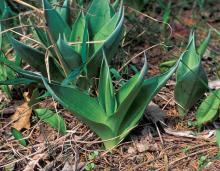
Species Types
Scientific Name
Manfreda virginica (formerly Agave virginica)
Description
False aloe is one of the few native Missouri plants related to the agaves, or century plants, of the Southwest. Unlike agaves, a false aloe rosette can bloom and rebloom, and it doesn’t die after sending up a flowering stalk.
Media
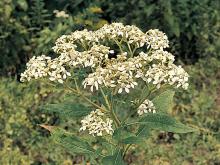
Species Types
Scientific Name
Verbesina virginica
Description
White crownbeard is a tall native perennial wildflower with clusters of white flowerheads. It's called “wingstem” for the narrow green wings running along the stem. It’s called “frostweed” because it forms "frost flowers": strange and beautiful formations at the stem bases after a sudden hard frost.
Media

Species Types
Scientific Name
Silphium laciniatum
Description
Compass plant grows to 8 feet tall and has foot-long, deeply cleft leaves at its base. It got its common name because its leaves turn so that the surfaces face east and west to take full advantage of the sun’s rays.
Media
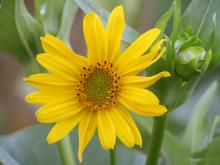
Species Types
Scientific Name
Silphium perfoliatum
Description
Called carpenter’s weed for its remarkably square stems, cup plant is also notable for its large, opposite leaves that fuse around the stem to form a leafy cup that holds rainwater.
See Also
About Wildflowers, Grasses and Other Nonwoody Plants in Missouri
A very simple way of thinking about the green world is to divide the vascular plants into two groups: woody and nonwoody (or herbaceous). But this is an artificial division; many plant families include some species that are woody and some that are not. The diversity of nonwoody vascular plants is staggering! Think of all the ferns, grasses, sedges, lilies, peas, sunflowers, nightshades, milkweeds, mustards, mints, and mallows — weeds and wildflowers — and many more!





















